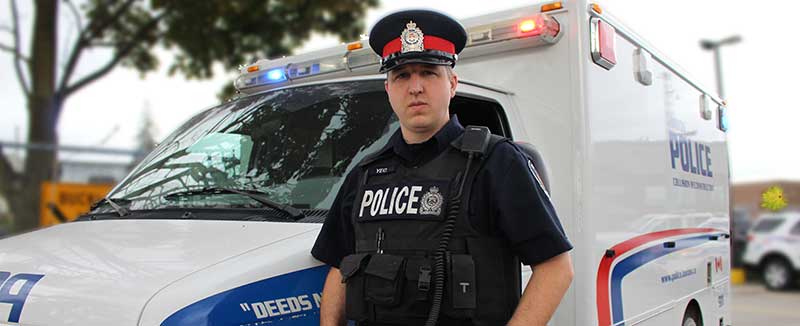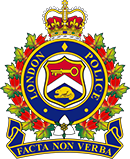
The art and the science of collision reconstruction
The call comes in.
Motor vehicle collision. Critical injuries or worse. First responders are on-site and the scene is secure.
It’s time for the London Police Service’s traffic collision reconstructionists to find the facts.
“Collisions are chaotic by their nature,” says Sgt. Sean Harding of the Traffic Management Unit. “We’re there to figure out what actually occurred. We talk to witnesses, but people can be confused about what they saw or think they saw. Our job is to look at the physical evidence and present our best interpretation of what happened.”
“Reconstruction” sounds like an exercise that happens after the fact in a controlled environment, but the reality is often much different. Whenever possible, the work is done in the immediate aftermath of the crash, when the evidence is fresh. Evidence can be lost very quickly as emergency crews work on extracting victims from vehicles, putting out fires, or containing leaks.
Even so, collision reconstructionists learn to approach things slowly and methodically.
“You have to step back, take a look at what you actually have, and try to find some evidence that you can use to reconstruct the scene later on,” says Cst. Brad Yeo. “There’s no time limit when you get to the scene, so you can slow right down. We’re trying to collect as much information as we can and we don’t want to be in a situation where we have to rush through things.”
That information comes from a lot of different sources – debris, impact gouges in the road, tire friction and skid marks, vehicle damage and positioning, and a wide variety of other details. Increasingly, investigations involve video evidence from dash cams and security cameras, as well as aerial footage recorded by LPS unmanned aerial vehicles. Data from a vehicle’s event data recorder – basically the automotive equivalent of an airplane’s black box – can also come into play.
When the evidence is collected, collision reconstructionists use an incredible amount of physics, math, and technology to sort out what happened. They learn to understand how vehicle dynamics, road conditions, and weather affect crashes. They can also use surveying equipment, mapping, and software to create a detailed scale diagram of the scene.
Their work helps determine not only how the collision occurred, but whether criminal charges should be laid as a result.
“The evidence speaks for itself,” Cst. Yeo says. “You can clearly confirm or dispute a witness account that says the vehicle was travelling right or left or going east or west just by the evidence that’s left on the road. We can also get speed off of skid marks, which is really important. We want to know how fast a vehicle was going in a situation where criminal charges may be laid.”
It takes a lot of training to gather and work with the evidence effectively. Investigators complete several courses – each two or three weeks in length – to reach the Collision Reconstructionist (Level 4) designation. They also do a substantial amount of on-the-job training to learn how to use software and other technology.
From there, they can branch into reconstruction specialties including commercial motor vehicle reconstruction, pedestrian collision reconstruction, motorcycle reconstruction, crash data recorder analysis, and others.
The LPS currently has five Level 4 collision reconstructionists who get called in from their regular duties when necessary. On average, they investigate about 20 collisions every year, producing reports that can number over 200 pages. The reports are often cited in court cases and used in insurance settlements. Traffic collision reconstructionists also frequently give expert testimony in trials.
While they approach their investigations objectively and professionally, collision reconstructionists are not blind to the human tragedy in their work. In fact, humanity is often what drives them to do the job.
“We try to get answers for the family,” Cst. Yeo says. “When there’s a death, nothing’s going to bring closure to the remaining family members, but if there’s a dispute about what happened, the evidence that’s left on those vehicles and on the road can tell a different story.
“Sometimes people need us to find the answers and tell that story for them.”










